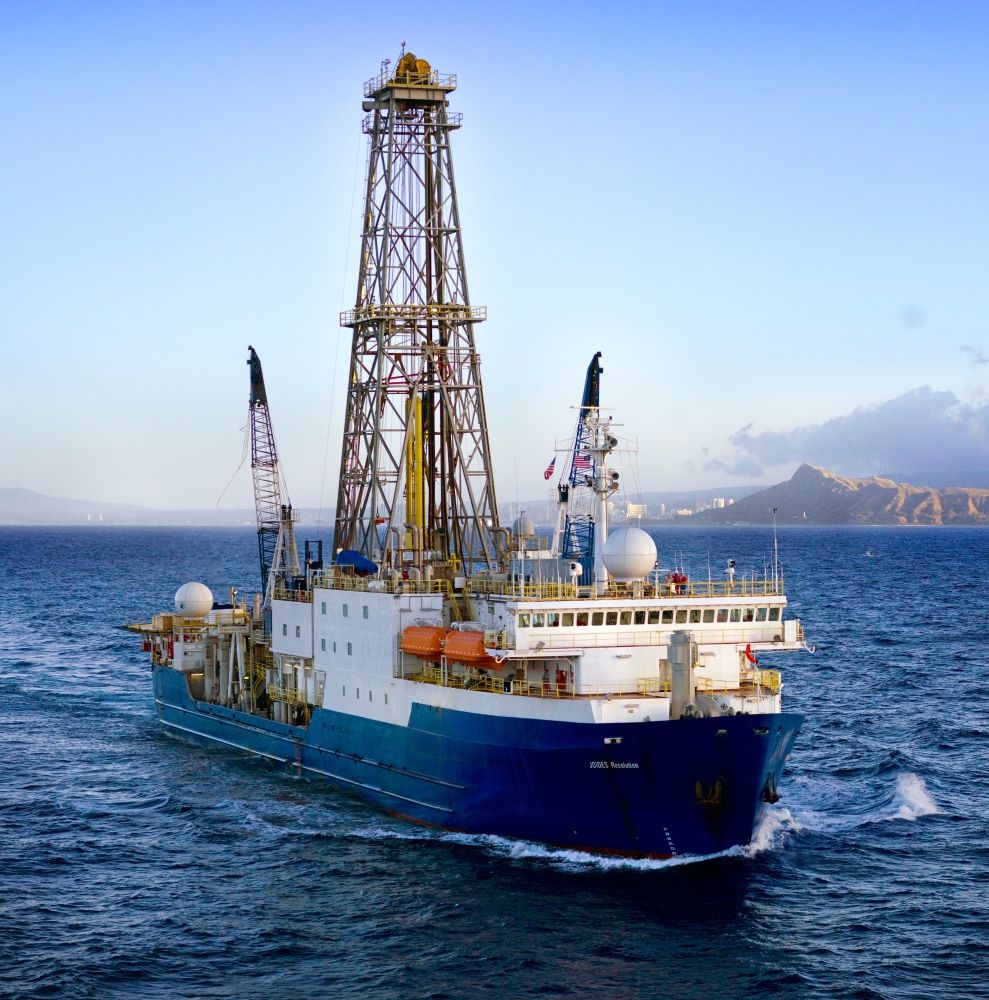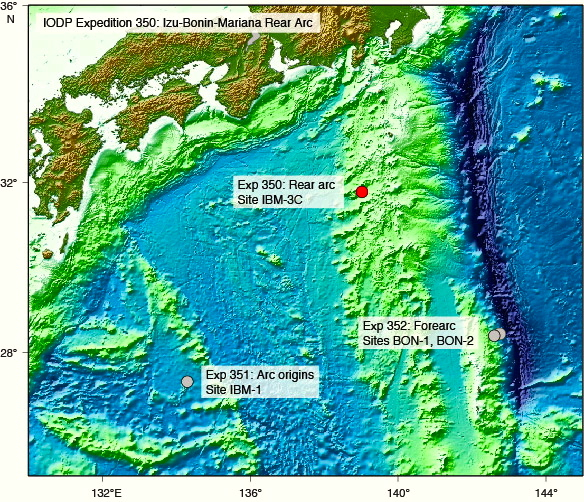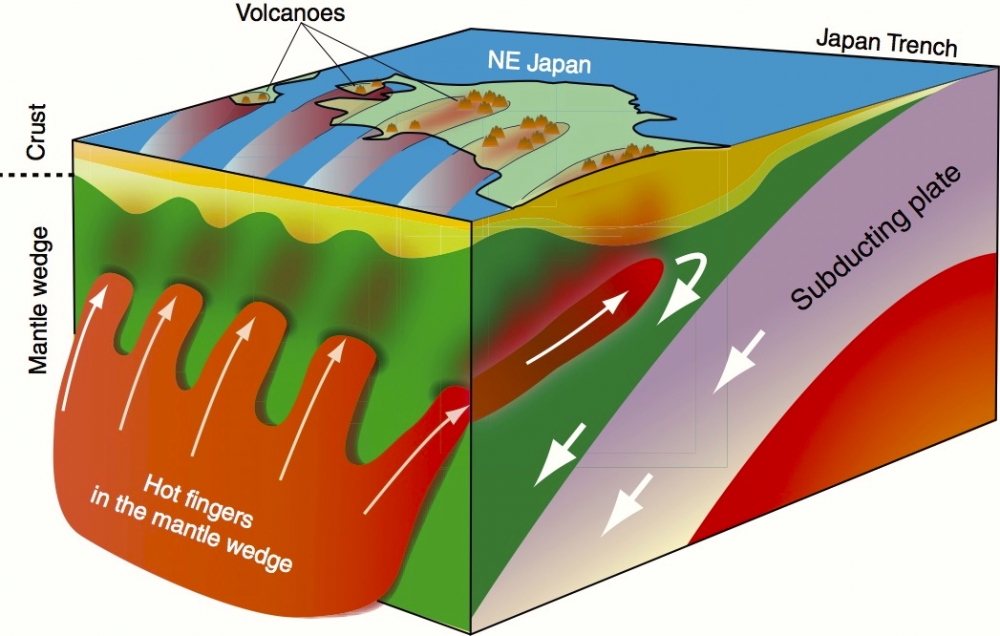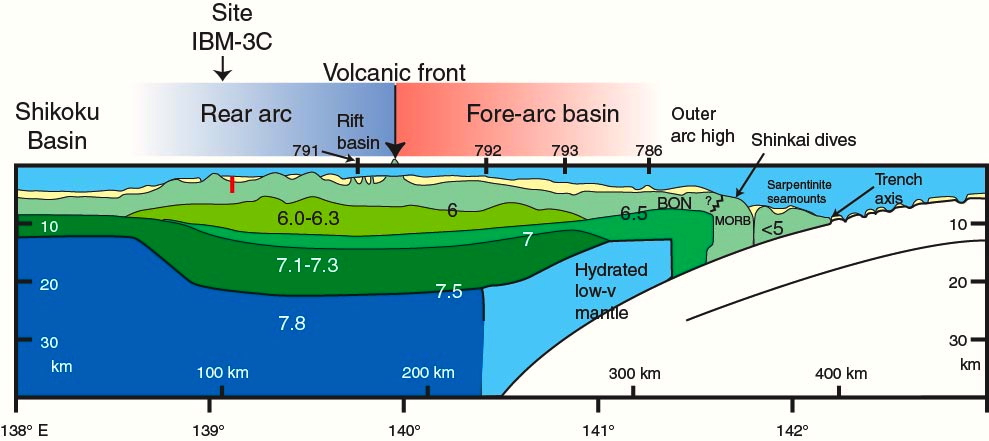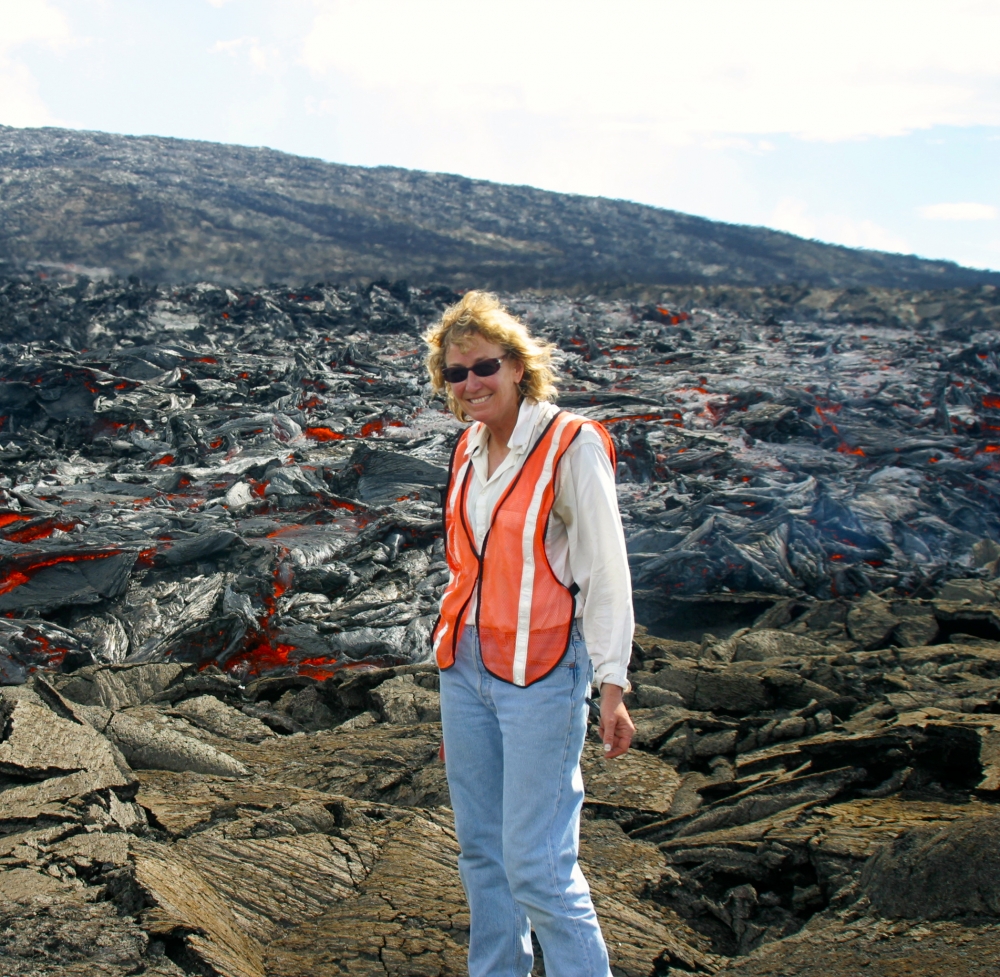2,000 Meters Under the Sea
When the scientific ocean drilling vessel JOIDES Resolution leaves Keelung City, Taiwan, at the end of March, UC Santa Barbara earth science professor Cathy Busby will be on board as co-chief scientist. For two months Busby and more than 50 other scientists and technicians will live aboard the vessel while it bores 2,200 meters into the seabed, thereby setting a new depth record.
Once it leaves port, the rig will travel for two days and anchor in the Japanese waters of the eastern Philippine Sea. There, the international team will explore the rear of the Izu-Bonin arc, a largely underwater chain of subduction volcanoes that runs south from Yokohama, Japan. These volcanoes form where an oceanic plate dives down into the mantle — as it does in the well-known Mariana trench — and produces a line of volcanoes parallel to the trench called an arc.
“The kind of rocks we’re going to be drilling are what I’ve worked on my whole life, only when they’ve been shoved up on the land and I get to walk around on them in my field boots,” said Busby, an expert in tectonics, sedimentology and volcanology. “Oceanographic studies have a much less complete view than field studies because they study drill core rather than three-dimensional outcrops but you get to see what the rocks are like before they actually gets shoved up on the land, so the rocks are more pristine. The process of shoving the rocks onto the land changes them.”
Busby’s is the first of three consecutive expeditions in the same vicinity, all under the auspices of the International Ocean Discovery Program, which explores the history and structure of the Earth as recorded in seafloor sediments and rocks. Busby explained that the JOIDES Resolution will drill through a mainly sedimentary record to determine the evolution of the Izu-Bonin arc volcanic chain, which was formed by subduction when the Pacific Plate slipped under the Philippine Sea Plate.
“We don’t know because we are just interpreting seismic lines, but we expect to get back rocks that are about 40 to 45 million years old at the bottom of the core,” Busby said. “The main arc volcanic chain, which lies parallel to the trench, has been studied quite a bit, but behind the main volcanic chain, there is a whole series of volcanic chains that trend perpendicular to the main arc chain, and we don’t know why they are there.”
One theory to explain these rear-arc volcanic chains, called the hot fingers hypothesis, suggests that the subducting plate creates a current in the Earth’s mantle, causing a return flow of hot material toward the arc. This makes each chain a finger (see diagram). “If that’s true, then each chain should get younger going toward the arc,” Busby explained. “We won’t know until we drill the section and see what the record is.”
The main goal of Expedition 350 and the two that follow is to characterize the arc’s evolution and the formation of its crust in order to learn more about how continents grow over time. The expeditions will also strive to determine the nature of the region’s crust and mantle prior to the onset of subduction and investigate how subduction begins.
“One model for the assembly of continents is that, given the right conditions, volcanic arc chains in the oceanic realm above a subduction zone may develop a thick middle crust, which is the same composition as continental crust,” Busby explained. “When pushed onto land, the lower crust, which is not continental in composition, subducts into the mantle, while the middle crust is too light to subduct and instead gets shoved onto the continent, making it grow.”
Scientists from 11 countries will work round the clock in 12-hour shifts, and Busby and her co-chief scientist, Yoshihiko Tamura, a petrologist with the Japan Agency for Marine-Earth Science and Technology, won’t be getting much sleep if things go well.
“It really depends on what’s coming up and whether we’re getting good recovery or not,” said Busby. “We expect to get good recovery because the rocks are not really hard, but they should be well-cemented, so they won’t take forever to drill through nor fall apart. That’s why we’re thinking we can go deeper than anyone else has.”
Initial analysis will take place on the ship but more in-depth studies will be ongoing for a year and half after the researchers debark at Yokohama at the end of May. On board, they will examine rock samples in core and with microscopes; use microfossils to estimate age and environmental conditions when the rock was formed; measure physical properties; analyze core fluids; and perform rapid chemical composition tests.
“The only thing we are concerned about is the very beginning part of the drilling, which is in unconsolidated sediment,” Busby said. “That’s the tricky part. It’s like punching a straw into a bunch of glass beads in water. But once we’re past the first 100 meters, then it should be pretty easy.”
This JOIDES Resolution expedition is a dress rehearsal for an even more ambitious expedition aiming to drill 4 to 5 kilometers below the sea floor crust in the Izu-Bonin arc in order to reach the middle crust. For this, the team will use the Chikyu, a larger Japanese deep-sea vessel that may be capable of drilling up that deep. That expedition won’t begin until 2016 and could take a year or two, rather than two months, with multiple science teams switching off. In the meantime, Busby and her fellow scientists will be busy analyzing the samples they bring back from the Izu-Bonin rear arc.
